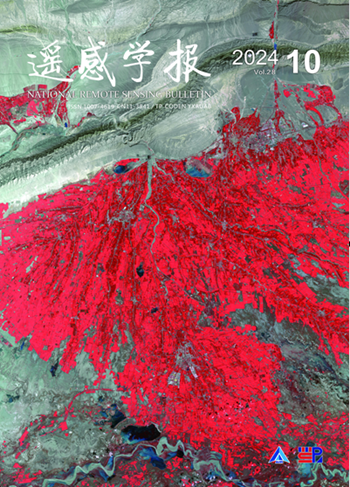利用卫星遥感近实时绘制作物物候:挑战与机遇
引用次数: 66
摘要
作物酚学对农业管理、作物产量估算和农业生态系统评估至关重要。传统上,作物生长阶段是从地面观察的,这很耗时,而且缺乏空间变异性。遥感植被指数(VI)时间序列已被用于绘制地表酚学(LSP)图,并主要与生长季节后的作物生长阶段有关。近年来,高时间和空间分辨率的遥感数据使人们能够在生长季节近实时地绘制作物根系图。本文总结了两类近实时映射方法,即基于曲线的方法和基于趋势的方法。基于曲线的方法将历史年份的时间序列VI和作物生长阶段与当前观测相结合,以估计作物生长阶段。基于曲线的方法能够进行短期预测。基于趋势的方法从时间序列中检测向上或向下的趋势,并使用增加或减少的动量和VI阈值来确认趋势。基于趋势的方法只使用当前的观察结果。基于曲线和基于趋势的方法都有希望及时绘制作物生长阶段图。尽管如此,由于遥感观测并不总是对作物生长阶段敏感,因此近实时绘制作物酚学图具有挑战性。作物酚学检测的准确性取决于生长季节内无云观测的频率和可用性。最近的卫星数据集,如统一的陆地卫星和哨兵2号(HLS),有望绘制大面积季节内的作物酚学图。在不久的将来进行操作应用是可行的。本文章由计算机程序翻译,如有差异,请以英文原文为准。
Mapping Crop Phenology in Near Real-Time Using Satellite Remote Sensing: Challenges and Opportunities
Crop phenology is critical for agricultural management, crop yield estimation, and agroecosystem assessment. Traditionally, crop growth stages are observed from the ground, which is time-consuming and lacks spatial variability. Remote sensing Vegetation Index (VI) time series has been used to map land surface phenology (LSP) and relate to crop growth stages mostly after the growing season. In recent years, high temporal and spatial resolution remote sensing data have allowed near-real-time mapping of crop phenology within the growing season. This paper summarizes two classes of near-real-time mapping methods, i.e., curve-based and trend-based approaches. The curve-based approaches combine the time series VIs and crop growth stages from historical years with the current observations to estimate crop growth stages. The curve-based approaches are capable of a shortterm prediction. The trend-based approaches detect upward or downward trends from time series and confirm the trends using the increasing or decreasing momentum and VI thresholds. The trend-based approaches only use current observations. Both curve-based and trend-based approaches are promising in mapping crop growth stages timely. Nevertheless, mapping crop phenology near real-time is challenging since remote sensing observations are not always sensitive to crop growth stages. The accuracy of crop phenology detection depends on the frequency and availability of cloud-free observations within the growing season. Recent satellite datasets such as the harmonized Landsat and Sentinel-2 (HLS) are promising for mapping crop phenology within the season over large areas. Operational applications in the near future are feasible.
求助全文
通过发布文献求助,成功后即可免费获取论文全文。
去求助
来源期刊

遥感学报
Social Sciences-Geography, Planning and Development
CiteScore
3.60
自引率
0.00%
发文量
3200
期刊介绍:
The predecessor of Journal of Remote Sensing is Remote Sensing of Environment, which was founded in 1986. It was born in the beginning of China's remote sensing career and is the first remote sensing journal that has grown up with the development of China's remote sensing career. Since its inception, the Journal of Remote Sensing has published a large number of the latest scientific research results in China and the results of nationally-supported research projects in the light of the priorities and needs of China's remote sensing endeavours at different times, playing a great role in the development of remote sensing science and technology and the cultivation of talents in China, and becoming the most influential academic journal in the field of remote sensing and geographic information science in China.
As the only national comprehensive academic journal in the field of remote sensing in China, Journal of Remote Sensing is dedicated to reporting the research reports, stage-by-stage research briefs and high-level reviews in the field of remote sensing and its related disciplines with international and domestic advanced level. It focuses on new concepts, results and progress in this field. It covers the basic theories of remote sensing, the development of remote sensing technology and the application of remote sensing in the fields of agriculture, forestry, hydrology, geology, mining, oceanography, mapping and other resource and environmental fields as well as in disaster monitoring, research on geographic information systems (GIS), and the integration of remote sensing with GIS and the Global Navigation Satellite System (GNSS) and its applications.
 求助内容:
求助内容: 应助结果提醒方式:
应助结果提醒方式:


